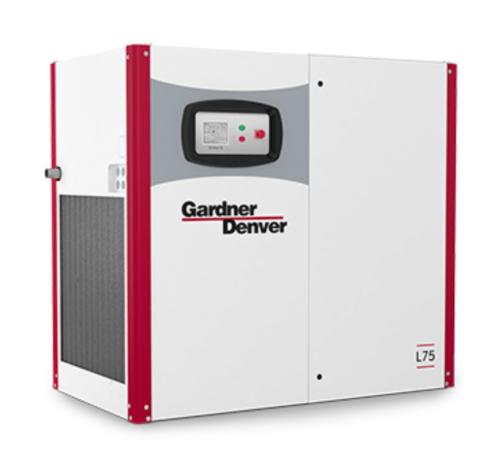What Is a Compressed Air Audit?
Many industrial facilities depend on compressed air systems to power various critical pieces of equipment. For some organizations, compressed air is just as important as electricity. But it’s also a resource that’s too often overlooked when it comes to efficiency. And this can be costly.
According to the U.S. Department of Energy, as much as 10 percent of all electricity generated in this country is used by different types of compressors. And shockingly, the DOE says that half of that energy is wasted. So, how can your business reduce energy waste? One way is to conduct a compressed air audit.
A compressed air audit, also called a compressed air survey or compressed air assessment, is a way to understand the efficiency and effectiveness of your current air compressor system. These studies involve various inspections and include recording devices like pressure dataloggers and amperage dataloggers, generally focused on the supply side of the system.
The primary purpose of a compressed air audit is to gain full knowledge about the amount of energy used by the system and receive a series of suggestions to maximize power consumption efficiency. These studies often uncover unknown issues that can significantly impact the effectiveness of your overall operation.
Benefits of Doing a Compressed Air Audit
If your compressed air system hasn’t been audited recently or ever, it’s a good idea to put this on your schedule. Here are just three reasons to make regular auditing a priority:
 1. It can save you money
1. It can save you money
A compressed air system costs enough money to purchase and install. But the majority of your lifetime cost of owning one of these systems lies in its operation. Specifically, well over two-thirds of the costs associated with one of these systems are attributed to the energy used to run it. So it would make sense that you’d want it to be as energy-efficient as possible.
One of the main goals of a compressed air audit is to evaluate your system’s energy consumption to pinpoint areas for improvement. A simple adjustment in many systems can result in significant energy savings and lower operating costs. Bottom line: energy audits equal potential savings; you can’t go wrong with that!
2. It will make your system safer
Without regular compressed air audits, you could be missing safety issues that could damage your facilities and endanger your workforce. Frayed or damaged air hoses in your system are a significant safety risk that may not be immediately apparent.
When audited professionally, those items can be identified, repaired, or replaced before they burst and put your workers at risk. Undersized or damaged hoses can also lead to pressure drops, which can cause your system to stop performing or lead to costly damage.
Bad pressure gauges can hide pressure build-up in your tanks, which can burst if not discovered. Regular inspection can find and repair these issues. And electrical wires and components in your system should be regularly inspected to prevent potential breakdown and fire hazards.
Finally, an audit can ensure that your compressed air system adheres to industry safety standards. This can impact your insurance premiums and legal liability.
3. It can identify serious shortfalls
Not every business has the right compressor system for their needs. Granted, the compressed air system might have been ideal when you purchased it a decade ago. But your needs have changed since, and you failed to recognize that your equipment wasn’t keeping up.
A compressed air audit can help identify inefficiencies to help determine what type of system will best meet your current needs. The tank size, psi, and cfm of your current system should match the overall compressed requirements of your organization. An audit can help narrow down these options.
What to Expect During a Compressed Air Audit
If you decide to do a compressed air audit, this is an in-depth assessment of your compressed air system that takes about a week to complete. Some of the steps in the process include:
Site Survey
This step aims to compile a list of all the facility’s equipment that should be included in the compressed air assessment. This basic step includes recording the compressor make and model, storage system, and piping located within the facility.
Visual Inspection
All equipment is visually inspected inside and outside the compressor room. There is a detailed checklist for inspecting things like piping structure, filters, condensate drains, gauges, and electrical wiring and connections.
Output Measurement
After a visual inspection, data logging equipment is attached to the compressor to perform a seven-day air study. A technician taps into the main lines of the plant during regular production to measure pressure, cfm, and amp load. The audit consists of airflow measurements, pressure recordings, and energy consumed.
Data Analysis
You get a detailed analysis of the data with areas of improvement identified. This report tells you where you can make minor changes, such as fixing air leaks or upgrading an inefficient piece of equipment, to achieve significant gains.
Performance Verification
Should you decide to make the recommended changes to your compressed air system, a post-improvement assessment can re-take measurements to confirm that you have achieved efficiency gains.
Schedule Your Compressed Air Audit Today
Now that you understand what a compressed air audit is and its importance, it’s time to put this vital service on your regular maintenance schedule. C&B Equipment has been installing and maintaining compressed air systems in the Kansas City metro area for over 35 years.
Our technicians will perform a seven-day air study at your plant and generate a detailed report with recommendations. This audit will not only help keep your systems in top working conditions but also provide immediate monthly savings when you implement the suggestions.
Contact us today for more information or to schedule a service.
